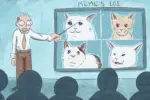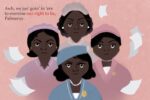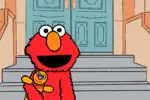If there’s one thing Generation Z is known for, it’s their flamboyant and often confusing slang. Words like “deadass,” “lowkey” and “sus” are just a few words that have become mainstays for 16-to-24-year-olds today, and millennials and older generations often gaze in confusion upon hearing such phrases.
However, slang is more than just funny words that young people use to make fun of their elders. It is a symbol of being part of a group and a demonstration of identity.
While some people gawk at the seemingly nonsensical phrases, their effect on the people using them is undeniable. For centuries, slang has been a powerful tool to help unite, divide and reconnect people across the country and the world.
The Symptoms of Sundry Slang
The term “slang” was first coined in the 18th century, but the concept is not exactly new. Nowadays, the word generally refers to informal phrases that are indicative of a certain group. Different age groups, countries and even towns have unique vocabularies — some more apparent than others.
The extreme subjectiveness of slang is what makes it a topic that both unites and divides people. Using the same terminology as your friend, colleague or peer makes you feel like you’re part of something — like you belong. Alternatively, if you don’t know a group’s vocabulary, you may feel isolated, as you’re not able to fully follow the conversation full of foreign terms.
To put it simply: Slang is a powerful tool.
An interesting trait of “higher” institutions is their complete revulsion for slang. Regardless of the group a person falls in and the vocabulary that comes with it, a person operating within regular social constructs will not use slang in, say, a job interview. It has essentially been branded as an informal, non-professional set of terms that do not belong in boardrooms, classrooms or various other rooms that rely heavily on a set of social and cultural rules.
This classification can be attributed to two things: the personal, non-inclusive nature of slang, and its inability to be standardized. Author Tom Dalzell explained this in his essay “The Power Of Slang.”
“The type of slang spoken varies with the community of the speaker, a person’s neighborhood, social setting, and income,” he wrote. “These many stratifications create a barrier to the creation of a standard national form of slang.”
This lack of standardization makes slang unique. The informal phrases people use are a deeply personal and ever-changing subsect of language that never stays in one place. As such, it’s ripe for reactivity and allows groups to create slang on the fly to combat what they deem as opposing groups, as well as introduce new terms of endearment for those included in their own.
Identity With a Side of Appropriation
One of the chief places slang originates from is people in marginalized cultures, who use words and phrases to establish their identity within said culture. It’s a way for people in a community to identify each other, harking back to the trait of inclusion that defines slang as a concept.
Lexicographer Jonathon Green has been studying slang and related phenomenon for decades, and he said this is one of the leading factors in the production of such language.
“It confirms that we’re together and it confirms that you’re not one of us,” Green said in an interview with Time. “We want to put our arms around each other, as an element of self-defense.”
In fact, some of the most well-known Gen Z terms came out of these communities. According to Green, words like “snatched” and “lowkey” come from LGBTQ+ and Black communities respectively.
This raises a different series of questions, especially around so-called “mainstream” slang. While slang is created as a way for marginalized communities to connect, it is often taken by the mainstream populace and stripped of the camaraderie that it originated from. This can be seen most notoriously in the Black community, from where a large portion of mainstream slang words have come from for decades. Journalist Zeba Blay highlighted this is in an article for Huffington Post.
“Black slang words often go through the cycle of being used by black people, discovered by white people, and then effectively ‘killed’ due to overuse and a general lack of understanding of how to use these words,” Blay wrote.
One could argue that the spread of slang native to a certain community is not necessarily a bad thing. It’s is all about sharing a similar language, and the more people included means more inclusiveness, right? Blay took a neutral stance, explaining that there are always left and right limits to anything you borrow from another culture.
“The idea here isn’t necessarily to say that white people shouldn’t use certain black slang,” Blay explained. “But the issue is how the etymology of these words gets lost in the sauce … We should all be aware of where these words come from and what they mean without attributing arbitrary definitions to them.”
Aside from the appropriation debate, the connection these words and phrases have to their original communities should not be underestimated. Mainstream or not, it is a clear example of the unity-driven nature of slang.
Using Words as a Weapon
While the positive outlook on the concept is that it’s a way for people to connect, the reality is that it can just as effectively be used to divide.
As mentioned above, slang generally replaces words that have an informal nature to them. Common slang terms across all communities and cultures are a collection of words translating to praises or insults. Complimenting or insulting someone is generally an informal expression — paving the way for slang terms to fill in the gaps.
Gen Z’s wide arsenal of slang is a perfect example of this. Many of the words used by Zoomers are insults to be used in a variety of situations. “Shade,” “thirsty” and “tea” are all used by modern-day teens to negatively talk about someone. The term “boomer” is used to be derogatory toward older people.
It’s ironic, as mainstream, modern slang also includes positive words like “slay,” “flex” or “wig” alongside these insult-driven phrases. Once again, it’s the idea of “you’re either with us or against us.” To those acting properly within a given Gen Z community, their achievements would be described as a “flex.” Meanwhile, those who aren’t included might be “thirsting” for compliments.
This isn’t a unique trait of Zoomer language, though. Nearly every generation has their own collection of positive and negative connotations. Millennials in the mid-2000s may have expressed how their friend’s outfit was “poppin’,” while that old “fogie’s” shirt was “wack.”
Due to the inclusive nature of slang, there will always be phrases to describe those not in tune with the new wave of terminology. Like with any exclusive club, slang brings people together just as much as it divides them.

















